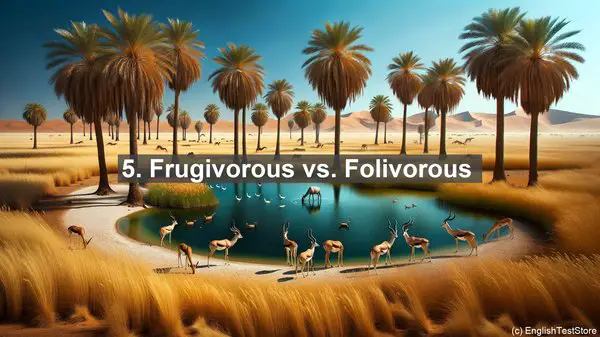Introduction to the World of Primatology
Welcome to this fascinating world of primatology. As you delve deeper into this field, you’ll come across several terms that might seem similar but have distinct meanings. Today, we’ll explore the top 10 commonly confused words in primatology, ensuring you have a solid foundation in this subject.
1. Ape vs. Monkey
While both apes and monkeys belong to the primate order, they have significant differences. Apes, like gorillas and orangutans, lack tails and have larger bodies. Monkeys, on the other hand, have tails and are generally smaller. So, the next time you spot a primate, you’ll know whether it’s an ape or a monkey.
2. Arboreal vs. Terrestrial
When we talk about the habitat of primates, we often use the terms arboreal and terrestrial. Arboreal primates, such as gibbons, are adapted to life in trees, while terrestrial primates, like baboons, are more comfortable on the ground. Understanding these terms helps us comprehend the diverse environments primates inhabit.
3. Diurnal vs. Nocturnal
Primates, like humans, have different activity patterns. Some are diurnal, meaning they are active during the day, while others are nocturnal, preferring the night. For example, lemurs are known for their nocturnal behavior, while macaques are diurnal. This distinction is crucial when studying their behavior and ecology.
4. Prehensile vs. Non-prehensile
The ability to grasp objects is essential for primates. Some have prehensile tails or hands, which means they can grip and manipulate objects with precision. Others have non-prehensile appendages, limiting their dexterity. This distinction affects their foraging strategies and locomotion.

5. Frugivorous vs. Folivorous
Primates have diverse diets. Some, like orangutans, are primarily frugivorous, meaning they mainly consume fruits. Others, such as howler monkeys, are folivorous, with leaves forming a significant part of their diet. Understanding these dietary preferences helps us comprehend their adaptations and ecological roles.
6. Altruism vs. Cooperation
In primate societies, we often observe behaviors that benefit others. While altruism involves selfless acts that may incur a cost, cooperation is a mutually beneficial behavior. Both are crucial for maintaining social bonds and group cohesion in primates.

7. Dominance vs. Aggression
Primate hierarchies are often characterized by dominance relationships. Dominance is an individual’s ability to exert control over others, while aggression refers to hostile behaviors. While dominance can be established through non-aggressive means, aggression is a more direct display of power.
8. Monogamy vs. Polygamy
Primate mating systems vary. Monogamy refers to a long-term pair bond between two individuals, while polygamy involves multiple mates. Within polygamy, there are two types: polygyny, where a male mates with multiple females, and polyandry, where a female mates with multiple males.
9. Anthropomorphism vs. Objectivity
When studying primates, it’s essential to maintain objectivity. Anthropomorphism, attributing human-like characteristics to animals, can cloud our understanding. While it’s natural to relate to primates, it’s crucial to interpret their behaviors and actions in a scientifically rigorous manner.
10. Conservation vs. Preservation
As primates face numerous threats, it’s crucial to understand the difference between conservation and preservation. Conservation involves sustainable use of resources, while preservation aims to protect areas in their pristine state. Both approaches are vital for ensuring the long-term survival of primates and their habitats.
